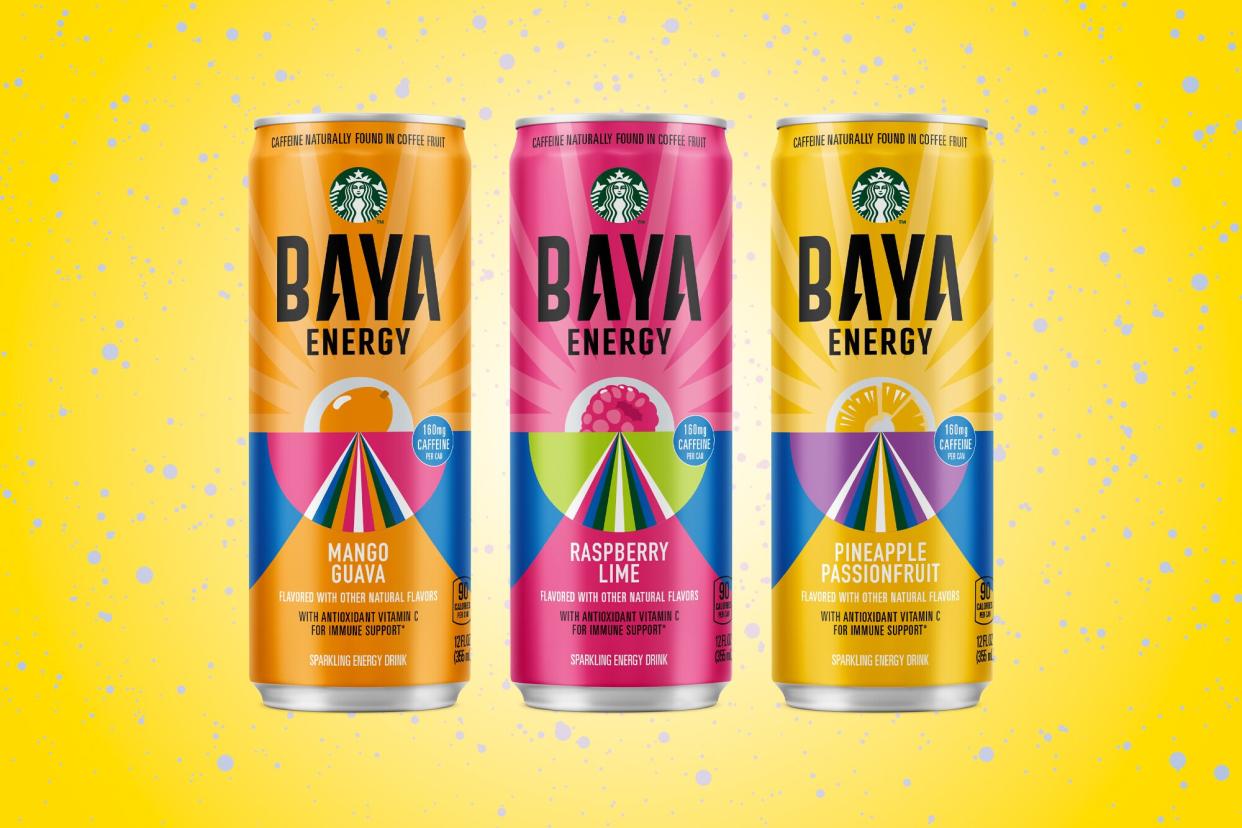Starbucks Just Launched a New Energy Drink—but Is It Healthy?

Starbucks
Starbucks is expanding its beverage empire with a new line of energy drinks, as part of its partnership with Pepsi. Starbucks Baya Energy is now available in grocery stores nationwide and features three flavors: Mango Guava, Raspberry Lime and Pineapple Passionfruit.
According to a Starbucks media release, Starbucks Baya Energy is made with caffeine that is naturally found in coffee fruit, as well as "antioxidant vitamin C for immune support to give customers a boost of feel-good energy." The ingredients in each flavor are about the same, except for the types of fruit juice used for each flavor. The ingredients listed for the Pineapple Passionfruit flavor are: carbonated water, white grape juice from concentrate, cane sugar, pineapple juice from concentrate, natural flavors, ascorbic acid (vitamin C), beta carotene (color), citric acid, coffee fruit extract and green coffee bean extract.
Though the Starbucks Baya Energy drinks only have 90 calories, nearly all of those calories come from sugar. While five of those grams are naturally occurring from the fruit juice, the remaining 17 are added in the form of added sugar, specifically cane sugar. "Sugar-sweetened beverages are the number one source of added sugar in most American's diets, and most people are consuming much more than the recommended maximum of 10% of their daily calories," says EatingWell's Associate Nutrition Editor, Jessica Ball, M.S., RD. "To help keep your added sugar intake in check, opt for drinks that are naturally sugar-free like tea and seltzer," she adds.
Additionally, the nutrition facts label boasts that this drink provides 100% of your daily recommended intake for vitamin C, but research shows you're better off getting your vitamins from whole food sources, vitamin C in particular, instead of from additives to other foods. "Whole food sources of vitamin C, like fruits and vegetables, also contain water and fiber which allows them to be better absorbed in the digestive tract," says Ball, "When you opt for a supplement or energy drink, you are missing out of the other nutritional components that come with a whole food."
While this drink is likely to give you a jumpstart when 2 p.m. rolls around, it's not the good kind. All this sugar with no fiber, protein or fat to temper your blood sugar will cause it to skyrocket. You may get a productive (albeit jittery) 30 minutes or an hour in post-consumption, but it will likely cause you to crash. Plus, if you've already had a cup or two of coffee earlier in the day, you'll have a whole bunch of caffeine in your system that can disrupt your circadian rhythms and keep you from getting the sleep you need. Talk about a vicious cycle!
Instead of reaching for a low-calorie, caffeine-laden beverage when you feel a slump coming on, consider a homemade energy drink or a healthy, energy-boosting snack, like these energy balls. If you're not hungry, try getting out for a walk—even if it's just for 10 minutes—which offers a host of benefits beyond rejuvenating your mind and body. And if the afternoon fatigue is becoming a habit, consider a few science-backed tweaks to boost your energy, like upping your iron intake and tracking your hydration. Before you know it, you won't be tempted to reach for those energy drinks anymore.

